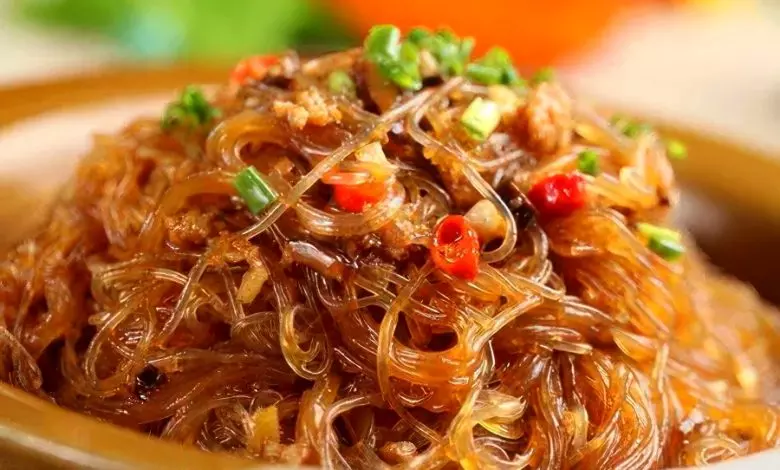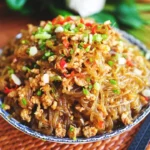Sometimes, navigating the menu of a foreign cuisine can be challenging, especially when the dish names sound unusual. A classic example is the “Ants Climbing a Tree recipe” (蚂蚁上树), a unique and popular Sichuan dish made with flavorful ingredients like pork and glass noodles. If you’ve never heard of “Ants Climbing a Tree,” the name might be confusing or even unappealing, but this dish is full of flavor. Let me guide you through this easy-to-follow “Ants Climbing a Tree recipe” and show you how to make it right in your kitchen.
Contents:
The name “Ants Climbing a Tree” has an interesting origin story. In the classic play Tou E yuan (The Injustice to Dou E) by Guan Hanqing, dating back to around 1241-1320, the protagonist’s mother-in-law was old and frail, spending days in bed. Despite being poor, Dou E prepared meals hoping they would help her recover. With limited resources, she could only afford a small piece of pork, which she chopped finely and stir-fried with glass noodles. When served, her mother-in-law asked why “ants” were crawling over the noodles. Dou E explained that the small pork pieces resembled ants, while the glass noodles symbolized tree branches and the green onions represented leaves. Since then, this dish has been fondly named “Ants Climbing a Tree” and is celebrated in Sichuan cuisine.

Key Ingredient: Glass Noodles in the Ants Climbing a Tree Recipe
A primary ingredient in the “Ants Climbing a Tree recipe” is glass noodles, also known as cellophane noodles. Glass noodles are made from mung bean starch, giving them a light, chewy texture and a translucent appearance when cooked. This characteristic explains why they’re often called glass noodles or cellophane noodles. In Chinese, they are known as Fen Si (粉丝). These noodles are popular in Chinese cooking and can be found in a variety of dishes, including stir-fries, soups, stews, salads, and dumpling fillings. You can also try using sweet potato glass noodles for a slightly different texture and flavor.
How to Make the Ants Climbing a Tree Recipe at Home
This “Ants Climbing a Tree recipe” is a classic example of home-cooked Chinese cuisine and is not commonly found on restaurant menus. The dish’s signature look comes from finely chopped ingredients – everything that goes into the wok should be very small to resemble “ants.” Garlic, ginger, and green onions are pre-chopped, while pork is traditionally chopped twice, once before frying and then again after.
Cooking Tip for Glass Noodles: Glass noodles absorb sauce quickly, so if you prefer extra sauce in your “Ants Climbing a Tree recipe,” increase the chicken broth by up to 1 cup.
Ants Climbing a Tree (Ma Yi Shang Shu 蚂蚁上树)
Ingredients
- 120 g dried glass noodles
- 200 g pork finely chopped or minced
- 1-2 spring onions
- 1 tablespoon chopped ginger
- 1 tablespoon chopped garlic
- 1 tbsp doubanjiang bean chilli paste
- 1 tbsp oil
- 1 tbsp rice wine
- 1 tbsp dark soy sauce
- 2 tablespoons light soy sauce
- 1 tablespoon sugar
- 2-3 cups of water or chicken or vegetable broth unsalted
Instructions
- Soak the noodles in room temperature water for about 10 to 15 minutes until soft. Be careful not to soak them too long as they will get soggy. Drain them and set them aside for later.
- Heat the oil in a wok over medium-high heat. Briefly fry the chilli bean paste (Doubanjiang), then stir in the chopped or minced pork, ginger, rice wine and soy sauce. Fry until everything is well combined.
- Pour in hot water or broth. Then add sugar, white pepper and noodles. When the noodles have absorbed most of the water, add the spring onions, garlic and fresh chilli (if using). Stir and cook for 30 seconds and then serve immediately.
- This dish is usually served with steamed rice along with other dishes. However, it can also be served on its own.


